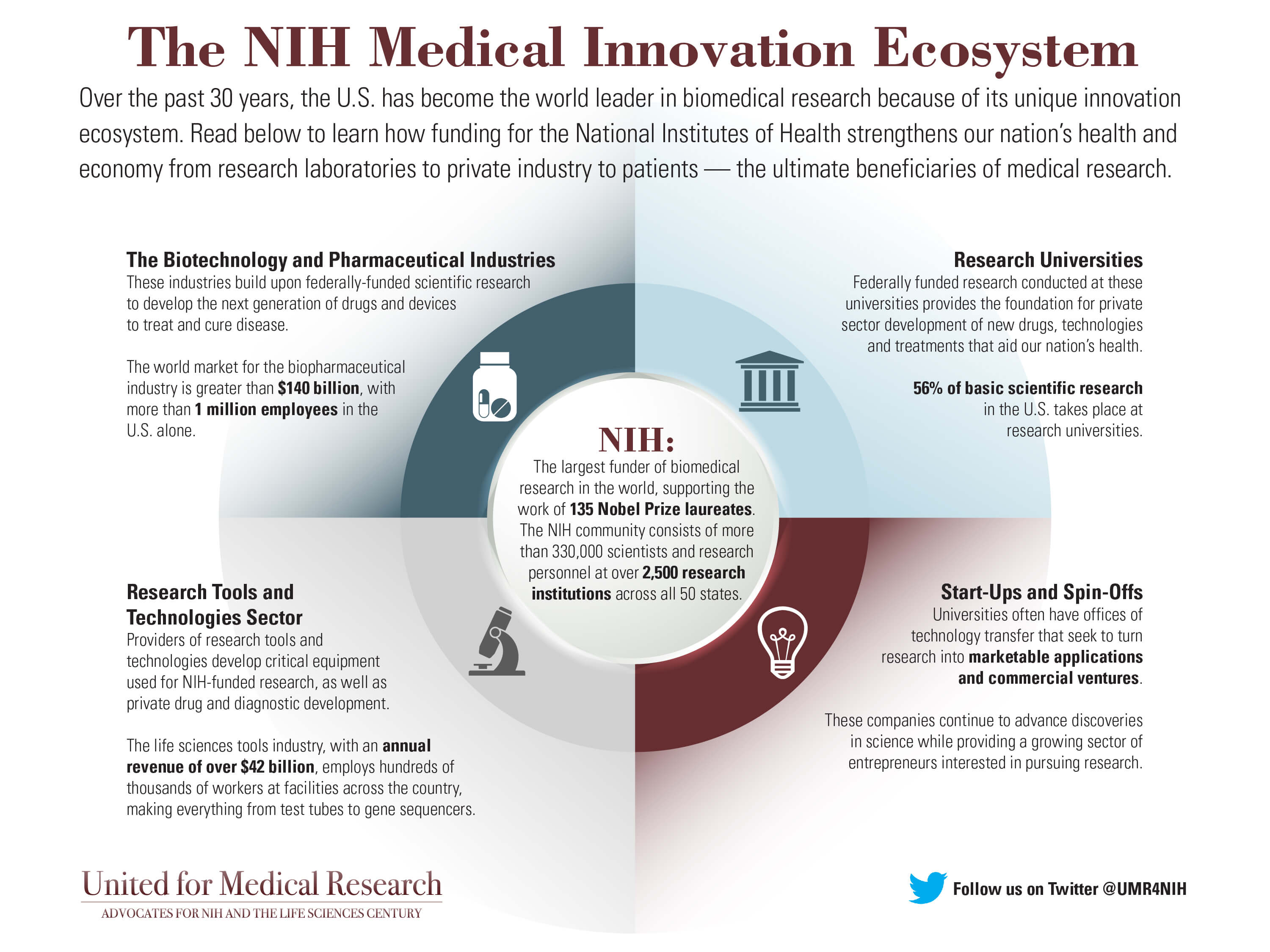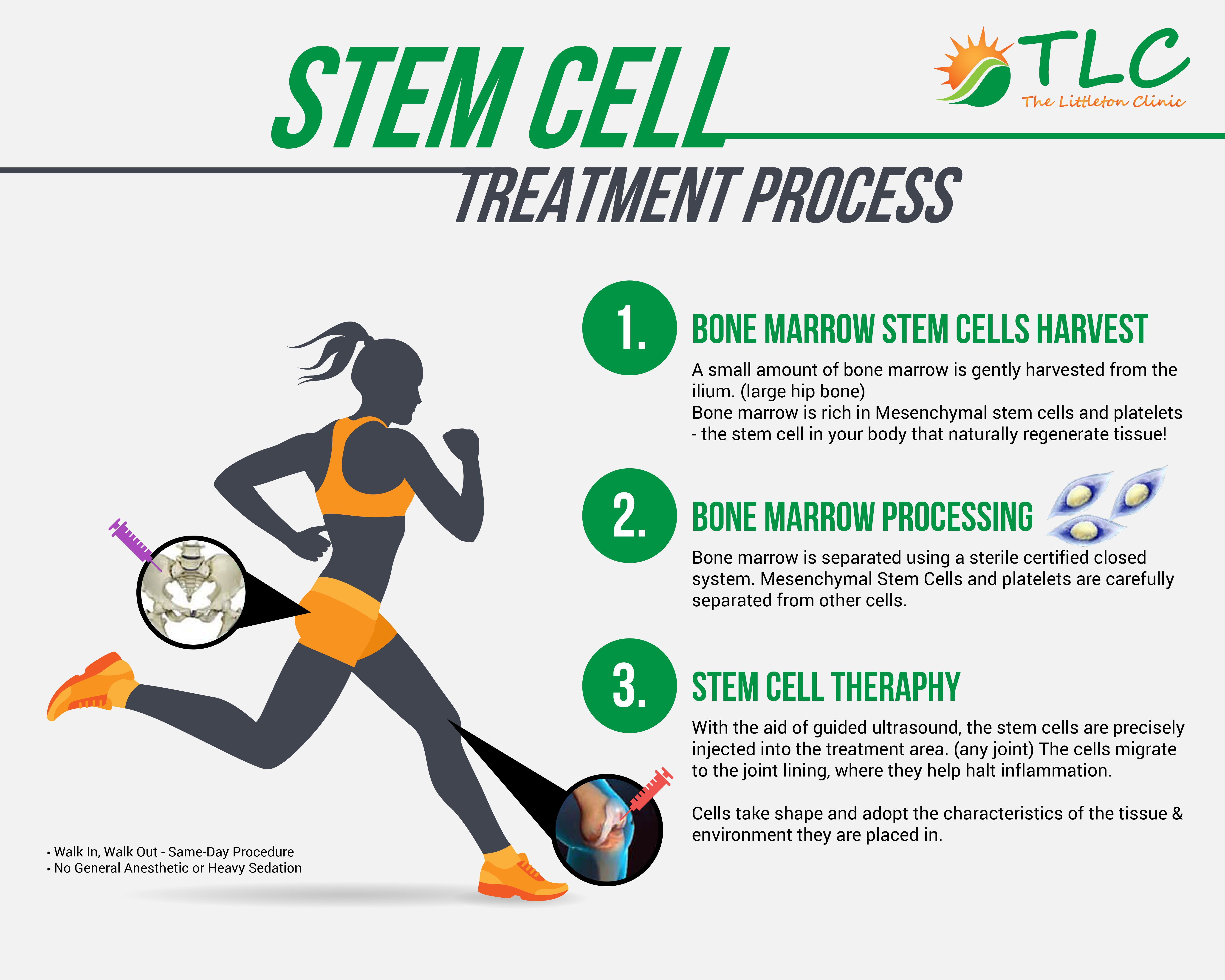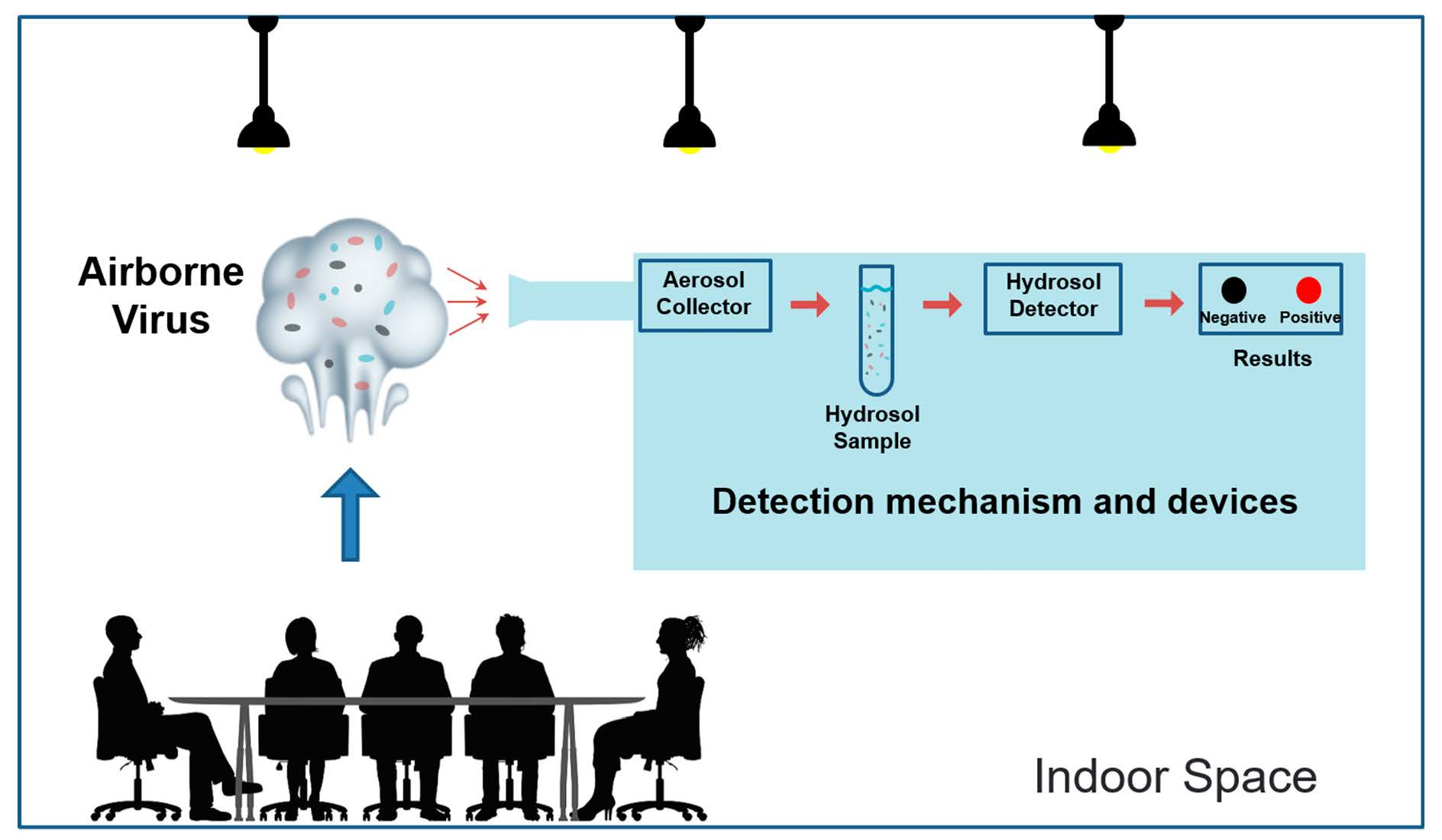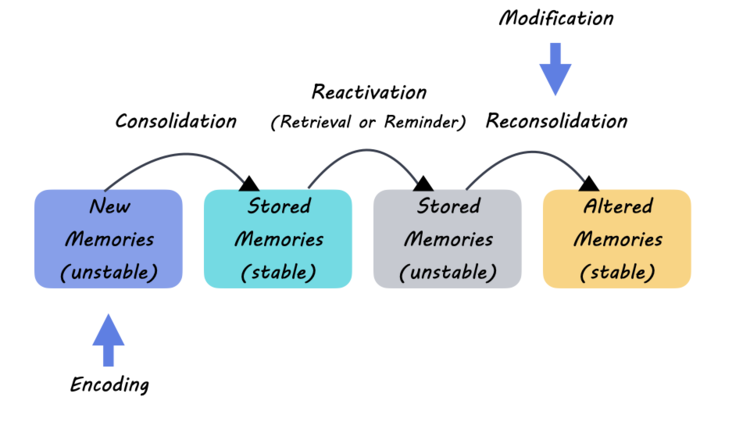The U.S. health innovation ecosystem stands as a beacon of progress and promise, drawing admiration from around the globe. Anchored by pivotal institutions such as the National Institutes of Health (NIH) and bolstered by significant NIH funding, this dynamic landscape fosters groundbreaking advancements in biomedical research and drug development. Central to its success are robust public-private partnerships that collaborate to drive technological advancements and transform novel ideas into practical health solutions. With a rich history of military and civilian research initiatives, this ecosystem has repeatedly demonstrated its capability to respond effectively to urgent health challenges. As the world faces new threats, the U.S. health innovation ecosystem is poised to lead the way toward a healthier and more resilient future.
When discussing the landscape of medical advancements in the United States, it’s essential to consider the nation’s revolutionary health innovation network. This unique framework is characterized by collaborations among universities, private industries, and federal institutions that collectively fuel pivotal discoveries in healthcare. At the core of this framework lies substantial funding from government entities, enabling extensive biomedical exploration and the development of cutting-edge treatments. The synergy between academic research and private enterprise has birthed a remarkable array of technological solutions, especially in response to recent public health emergencies. As we delve deeper into this intricate interplay, the importance of sustainable support for these partnerships becomes increasingly clear.
The Origins of the U.S. Health Innovation Ecosystem
The U.S. health innovation ecosystem has its roots in the collaborative efforts sparked by World War II, when the federal government recognized an urgent need for technological advancements. As the war intensified, the demand for medical and technological innovations became paramount, leading to a concerted effort between government agencies, universities, and private industries. This alliance laid the groundwork for a thriving environment where biomedical research could flourish, driven by a shared mission to innovate and solve pressing health challenges.
Initially, the National Institutes of Health and its funding mechanisms were in their infancy. However, as global conflicts underscored the importance of addressing public health, particularly in military settings, the necessity for a robust research foundation became clear. The establishment of the Office of Scientific Research and Development (OSRD) marked a turning point, creating a structured approach to funding and supporting biomedical research that would ultimately evolve into the well-developed ecosystem we see today.
Public-Private Partnerships and Their Impact on Biomedical Research
Public-private partnerships have played a crucial role in advancing U.S. biomedical research, generating innovations that have significantly improved health outcomes. These partnerships leverage the strengths of both sectors: the extensive funding and resource capabilities of public entities like the NIH and the cutting-edge technological advancements and agility of private companies. This collaborative approach has led to groundbreaking developments in drug discovery and development, as evidenced by the rapid advancements in medical therapies and vaccine development.
One prominent example of this collaboration is the development of penicillin during World War II, which showcased the potential of combining public funding with private expertise to overcome significant public health challenges. Such partnerships have become a cornerstone of the U.S. health innovation ecosystem, ensuring continuous progress and adaptation in response to emerging health threats and the evolving needs of the population.
NIH Funding: A Backbone for Health Innovations
National Institutes of Health (NIH) funding is vital in sustaining the U.S. health innovation ecosystem. Established to support ground-breaking biomedical research, NIH funding has paved the way for significant advancements in health care, including the development of new therapeutic drugs and technologies. By investing in various research initiatives, the NIH empowers scientists to explore innovative solutions to some of the nation’s most pressing health issues.
Furthermore, NIH funding not only supports immediate research projects but also fosters a culture of innovation within academic institutions and the biotechnology industry. It encourages collaboration among researchers, accelerates the pace of discovery, and facilitates the commercialization of novel health solutions. In the aftermath of potential funding cuts, maintaining a robust NIH funding structure is essential to preserving the momentum of U.S. biomedical research and ensuring ongoing improvements in public health.
Technological Advancements Fueling Drug Development
Technological advancements have revolutionized the landscape of drug development, playing a pivotal role in the U.S. health innovation ecosystem. The integration of cutting-edge technologies such as artificial intelligence, big data analytics, and high-throughput screening has significantly accelerated the drug discovery process. These innovations enable researchers to analyze vast amounts of data quickly, identify potential drug candidates, and optimize development timelines, ultimately leading to faster delivery of effective treatments to patients.
Moreover, advancements in biomanufacturing and formulation technologies are enhancing the ability to produce vaccines and therapeutics at scale. During the COVID-19 pandemic, for instance, rapid advancements in mRNA technology epitomized how swiftly the industry could adapt to crisis demands using existing frameworks and innovations. Such capabilities exemplify the strength of U.S. biomedical research and highlight the importance of continued investment in technological advancements for future health innovations.
The Role of Historical Context in Shaping Current Biomedicine
The historical context of the U.S. health innovation ecosystem provides essential insights into how current practices have evolved. The post-World War II period was marked by a rapid expansion of biomedical research, driven by foundational initiatives aimed at addressing war-related health challenges. This historical perspective paints a clearer picture of the emergent collaborations between government entities, academic institutions, and the private sector that formed the backbone of modern innovation.
Understanding the historical milestones, such as the establishment of the OSRD and the incorporation of research funding into national policy, illustrates the significance of public-private partnerships in shaping the current state of biomedical research. Such partnerships continue to cultivate environments that nurture innovation while ensuring financial resources are directed toward critical health initiatives that align with contemporary needs.
Challenges and Future Directions in Health Innovation
While the U.S. health innovation ecosystem has a storied legacy of success, it faces numerous challenges that could impede future advancements. Recent discussions over federal funding cuts, particularly concerning NIH, raise concerns about the viability of ongoing research efforts. Reductions in financial support could hinder the progression of vital biomedical projects that rely on federal grants, potentially stifling innovation and delaying the development of new therapies and technologies.
Additionally, navigating the complexities of regulatory frameworks and ensuring equitable access to new innovations remains a pressing concern. The industry must continuously adapt to these challenges, balancing the need for rapid drug development with the necessity of thorough testing and safety evaluations. Future directions in health innovation will require collaborative strategies that address these obstacles, ensuring sustained investment and fostering an environment conducive to groundbreaking discoveries.
Integrating New Talent into the U.S. Biomedical Research Landscape
The infusion of new talent into the U.S. biomedical research landscape is pivotal for sustaining innovation. As experienced professionals retire, a new generation of scientists must be prepared to take on the challenges of advancing health technology and therapies. Integrating young researchers into ongoing projects and funding initiatives enhances diversity of thought and innovation, which is crucial for overcoming the complex health issues facing society today.
Moreover, programs aimed at fostering collaboration between academia and industry also provide essential training opportunities for young scientists. By exposing them to real-world challenges during their educational journey, institutions can equip future biomedical leaders with the necessary skills to navigate the intricacies of drug development and technology implementation. This emphasis on training not only bolsters the workforce but also reinvigorates the entire health innovation ecosystem.
The Economic Impact of Biomedical Innovations
Biomedical innovations have far-reaching economic implications, contributing significantly to job creation and economic growth. As new therapies and technologies enter the market, they stimulate various sectors, including healthcare, pharmaceuticals, and biotechnology. By fostering innovations that improve health outcomes, the U.S. health innovation ecosystem ultimately leads to a healthier workforce, thereby enhancing productivity and reducing healthcare costs across the board.
Moreover, the successful commercialization of biomedical research can attract investments and foster entrepreneurship, creating a ripple effect that benefits the broader economy. Regions with robust biomedical research hubs, supported by strong public-private partnerships and NIH funding, often experience accelerated economic development, inspiring new startups and generating high-tech job opportunities. This interconnectedness between health innovations and economic prosperity underscores the continued importance of investing in the U.S. health innovation ecosystem.
Global Implications of U.S. Health Innovations
The success of the U.S. health innovation ecosystem serves as a model for countries across the globe. Many nations look to the synergy between public and private sectors as a blueprint for addressing their own health challenges through innovative biomedical research. The advancements stemming from this ecosystem not only provide solutions to domestic health issues but also have a significant impact on global health outcomes, often paving the way for international collaborations.
Furthermore, U.S. innovations have played a critical role in responding to global health crises, such as the COVID-19 pandemic, where rapid vaccine development showcased the strength of the nation’s biomedical research capabilities. As health threats become increasingly globalized, fostering collaborative networks that include international partners is essential for tackling shared challenges. The ongoing commitment to U.S. health innovation is vital not just for national health but for the well-being of the global community.
Frequently Asked Questions
What role does the U.S. health innovation ecosystem play in drug development?
The U.S. health innovation ecosystem is crucial in drug development, combining efforts from universities, the biomedical industry, and NIH funding. This collaborative environment fosters technological advancements and accelerates the transition of new discoveries into effective treatments, leveraging public-private partnerships to drive innovation.
How has NIH funding impacted the U.S. health innovation ecosystem?
NIH funding has significantly bolstered the U.S. health innovation ecosystem by providing substantial financial resources for biomedical research. This funding supports academic institutions, leading to groundbreaking discoveries and fostering collaborations that enhance drug development and technological advancements.
What are public-private partnerships in the context of the U.S. health innovation ecosystem?
Public-private partnerships within the U.S. health innovation ecosystem involve collaboration between government entities and private sectors to advance biomedical research and technological innovations. These partnerships are essential for sharing resources, expertise, and funding, leading to significant advancements in drug development and health technologies.
Can you explain the historical significance of technological advancements in the U.S. health innovation ecosystem?
The U.S. health innovation ecosystem has a rich history of technological advancements that began during World War II with the mass production of penicillin. This transformative milestone paved the way for further developments in biomedical research, establishing a strong foundation for the modern ecosystem that continues to innovate and improve public health.
What challenges does the U.S. health innovation ecosystem face today?
Today, the U.S. health innovation ecosystem faces challenges such as potential funding cuts to NIH, regulatory hurdles, and the need to maintain effective public-private partnerships. These challenges can impact the pace of drug development and technological advancements, necessitating ongoing dialogue and solutions to ensure the ecosystem’s success.
How do universities contribute to the U.S. health innovation ecosystem?
Universities are pivotal components of the U.S. health innovation ecosystem, serving as hubs for biomedical research and training the next generation of scientists. Their collaborations with the private sector and access to NIH funding facilitate critical discoveries that drive drug development and technological innovations.
What is the importance of biomedical research in the U.S. health innovation ecosystem?
Biomedical research is at the heart of the U.S. health innovation ecosystem, providing insights that lead to new therapies and treatments. It relies heavily on NIH funding and public-private partnerships to advance research, ultimately enhancing drug development and improving health outcomes across the nation.
How did World War II influence the U.S. health innovation ecosystem?
World War II significantly shaped the U.S. health innovation ecosystem by highlighting the need for rapid technological advancements in medicine. The collaboration between government and academia during this period fostered the development of critical health innovations, establishing a model that continues to benefit the fields of biomedical research and drug development today.
What is the future outlook for the U.S. health innovation ecosystem?
The future of the U.S. health innovation ecosystem looks promising, with ongoing advancements in biomedical research and drug development anticipated. However, it is essential to maintain robust funding from sources like the NIH and nurture public-private partnerships to ensure continued innovation and effective responses to health challenges.
| Key Point | Details |
|---|---|
| Historical Origins | The U.S. health innovation ecosystem began during World War II when a partnership was formed between the federal government and academic institutions to advance technology and medicine. |
| Federal Funding | Federal funding has historically been critical for academic research, which in turn supports private industry innovations. |
| Public-Private Partnerships | Collaborations between government, universities, and industry have led to significant advancements in biomedicine and technology. |
| Post-War Expansion | The success of wartime innovations laid the groundwork for expanded research and development in the postwar period. |
| Impact of Penicillin | The mass production of penicillin during WWII exemplifies the successful outcomes of the U.S. innovation system. |
| Long-Term Success Factors | The established base from wartime research supported the growth of modern biomedicine, including training a new generation of scientists. |
| Current Challenges | Recent policy changes aim to restrict research funding, raising concerns about the future of the public-private partnership. |
| Global Envy | The U.S. health innovation ecosystem is considered a model for other countries, demonstrating effective integration of public and private interests. |
Summary
The U.S. health innovation ecosystem is a hallmark of successful public-private partnerships that have fostered groundbreaking advancements in science and medicine since World War II. Originating from a need for urgent technological development, this collaboration has effectively combined government support with academic research and private industry innovation. Despite recent pressures on funding, the ecosystem remains a vital component for continued health advancements and serves as a global model. Ensuring the sustainability and growth of this ecosystem is critical not only for U.S. leadership in health innovation but also for the welfare of the global community.




